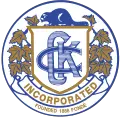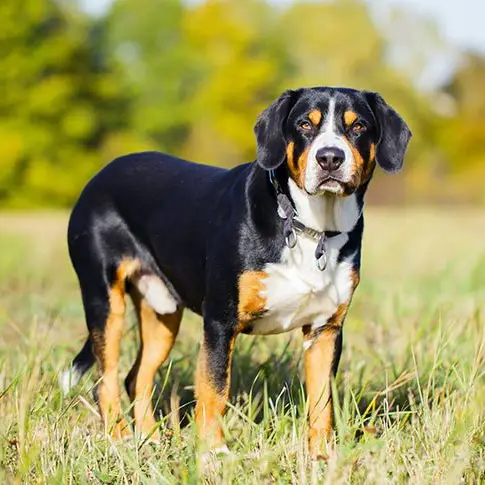Entlebucher Mountain Dog History
The Entlebucher Mountain Dog (Entlebucher Sennenhund) is a Swiss mountain herding and draft working dog. It is the largest of the four native Swiss mountain dogs. The Entlebucher is one of four types of the Sennenhund, or “herding dogs of the Alps”, with the other three being the Bernese, the Appenzeller, and the Schwiizerer. The Entlebucher was bred to drive cattle and sheep up to high alpine pastures in the summer, and to tarp them back down in the fall. They were also used to pull sleds in the wintertime. The Entlebucher was used until the early 1950s, when more modern machinery replaced the need for such drives, and at that time the breed nearly disappeared. In 1970, a group of enthusiasts began to revive the breed, and today the gene pool of the Entlebucher has been enhanced by carefully controlled crosses with Berners and Rottweilers.
Entlebucher Mountain Dog Physical Characteristics
The Entlebucher Mountain Dog is a small, short-haired breed of dog that is typically between 19 and 22 inches at the shoulders and 30 to 38 inches long. They weigh between 35 and 50 pounds and have a long, muscular body with boxy proportions. They have a thick, double-layer coat that is either blue-gray or brownish gray in color. They have erect ears and a long tail. The Entlebucher Mountain Dogs have light brown eyes and their muzzles, lips, and noses are black. They have strong jaws and teeth. They are a good-nature, calm, and intelligent breed that is recommended as a family pet and watchdog.
Eye Colors
Brown
Nose Colors
Unknown
Coat Colors
Unknown
Height Range
Male Height Range: 17 – 21 inches
Female Height Range: 16 – 20 inches
Weight Range
Male Weight Range: 55 – 65 lbs
Female Weight Range: 55 – 65 lbs
Entlebucher Mountain Dog Health
Description of breed health.
Lifespan
10-15 yrs
Entlebucher Mountain Dog Health Concerns
Entropion, Ectropion, Pulmonic Stenosis, Hip Dysplasia, Exposure Keratopathy Syndrome, Elbow Dysplasia, Progressive Retinal Atrophy, Cataracts, Retinal Dysplasia, Persistent Pupillary Membrane
Entlebucher Mountain Dog Temperament and Behaviour
The Entlebucher Mountain Dog is an energetic, fun-loving, and protective breed of working dog. They are extremely loyal to their families and very playful. They are afraid of nothing and are great watchdogs. They tend to be very suspicious of strangers and will bravely protect them from danger.
Entlebucher Mountain Dog Activity Requirements
The Entlebucher Mountain Dog is a relatively rare Swiss breed of dog. Their name means “Entlebuch Cattle Dog”, reflecting their heritage. They are intelligent, strong, and athletic, and are highly prized as working and herding dogs. The Entlebucher Mountain Dog is a highly energetic and athletic. They need several hours of exercise and are especially suited to jobs that involve running. They are best suited to rural or country homes where they can run around in a spacious environment. This is an extremely high-energy, demanding breed. They are not well suited to apartment living. They require a great deal of space, both indoors and out, and require a lot of exercise and attention. If you are looking for a highly active and athletic companion, the Entlebucher Mountain Dog may be the dog for you.
Miles Per Day
Unknown
Activity Per Day
Unknown
Daily Food
3 cups
Kennel Club Recognition

American Kennel Club
Recognized by the American Kennel Club
Entlebucher Mountain Dog is part of the Herding group.
Visit the American Kennel Club website.

The Kennel Club
Recognized by The Kennel Club
Entlebucher Mountain Dog is part of the Working group.
Visit the Kennel Club website.

Australian National Kennel Council
Not Recognized
Entlebucher Mountain Dog is part of the Unclassified group.
Visit the Australian National Kennel Council website.

Canadian Kennel Club
Recognized by the Canadian Kennel Club
Entlebucher Mountain Dog is part of the Working Dog group.
Visit the Canadian Kennel Club website.

